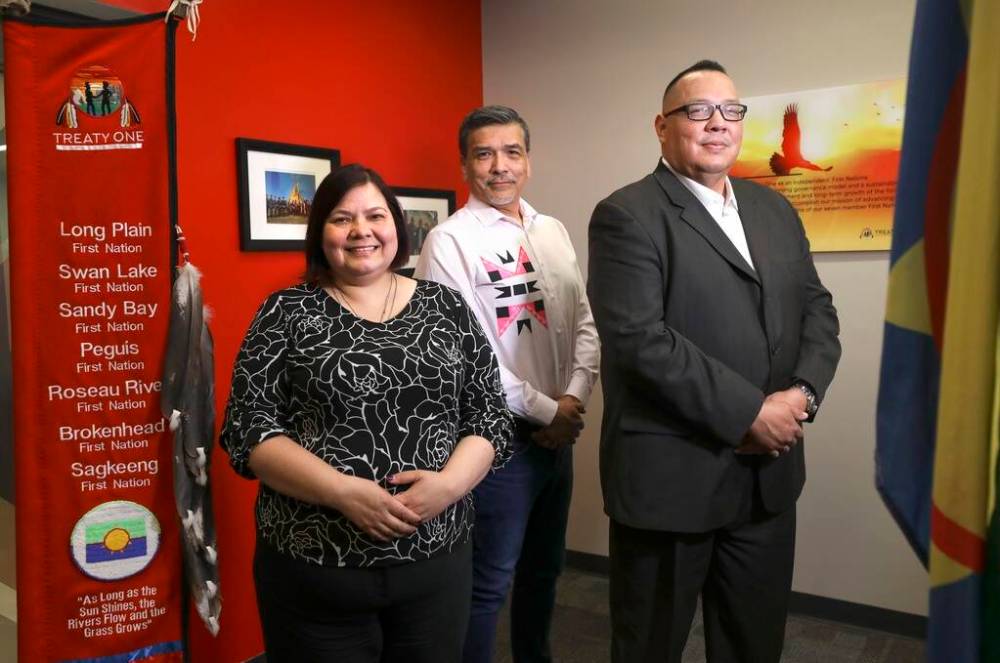Largest urban reserve worth $500M in GDP, 5,000 jobs
Advertisement
Read this article for free:
or
Already have an account? Log in here »
To continue reading, please subscribe:
Monthly Digital Subscription
$0 for the first 4 weeks*
- Enjoy unlimited reading on winnipegfreepress.com
- Read the E-Edition, our digital replica newspaper
- Access News Break, our award-winning app
- Play interactive puzzles
*No charge for 4 weeks then price increases to the regular rate of $19.00 plus GST every four weeks. Offer available to new and qualified returning subscribers only. Cancel any time.
Monthly Digital Subscription
$4.75/week*
- Enjoy unlimited reading on winnipegfreepress.com
- Read the E-Edition, our digital replica newspaper
- Access News Break, our award-winning app
- Play interactive puzzles
*Billed as $19 plus GST every four weeks. Cancel any time.
To continue reading, please subscribe:
Add Free Press access to your Brandon Sun subscription for only an additional
$1 for the first 4 weeks*
*Your next subscription payment will increase by $1.00 and you will be charged $16.99 plus GST for four weeks. After four weeks, your payment will increase to $23.99 plus GST every four weeks.
Read unlimited articles for free today:
or
Already have an account? Log in here »
Hey there, time traveller!
This article was published 15/06/2022 (1271 days ago), so information in it may no longer be current.
Winnipeg is set to host the largest economic development zone, or urban reserve, in Canada, which proponents say will serve as a model of Indigenous self-governance.
The proposed agreement for the former Kapyong Barracks land on Kenaston Boulevard would pave the way for Treaty One Nation to create the $1-billion Naawi-Oodena development.
Once the site is complete, Treaty One would forward 65 per cent of tax revenues collected from the site to the City of Winnipeg to pay for municipal services and keep 35 per cent to cover its own costs.

“It’s a large area (and) it’s not funded in the same way that other communities are funded and so we really need that (revenue) to be able to support (it). We’re really moving towards self-governance and recognition and self-sustainability and this development is a huge step towards that self-sustainability,” said Jolene Mercer, director of governance with Treaty One Development Corp.
The funds will be needed to effectively run and maintain the organization’s 109-acre portion of the site, Mercer said. The development is expected to have a mixed-use village with commercial, residential, sports and recreation, cultural campus, education and community spaces. That would include 2,300 to 3,000 residential units and 915,000 to 1.2-million square feet of commercial space.
Treaty One will develop 68 per cent of the land, while the federal Canada Lands Corp. will develop the rest.
Treaty One will provide pipes to connect to the city’s sewage system and build and maintain roads, Mercer said. It will also set up its own bylaws and zoning rules and issue its own permits for development, though it also plans to have extensive consultation with the city and ensure its construction complements neighbouring city properties, said Mercer.
“We are really looking for seamless integration,” she said.
The new development will provide significant financial benefits for Winnipeg, while making use of land that has been vacant for nearly 20 years, Mercer said.
“Not only are we developing an area that’s been undeveloped for years now, we’re also increasing our contribution to not only the Manitoba economy but the Winnipeg economy… It has a huge impact,” she said.
A city report estimates the development will generate $512 million for Manitoba’s gross domestic product and create 5,254 jobs.
While the widening of Route 90 is expected to be part of the construction, the matter is still under discussion with the city, Mercer added.
Treaty One expects the development will take 10 to 15 years to build, with initial site work expected to begin in August.
On Wednesday, the executive policy committee unanimously approved the agreement on taxes and city services to support the development, though the deal still awaits additional council, federal and Treaty One votes.
Mayor Brian Bowman called the proposal “historic” and said the division of tax dollars will support Indigenous authority over the site, a key step toward reconciliation.
“I think we can do better as a community and do it in collaboration with Indigenous governments and Indigenous peoples. It’s an exciting opportunity,” said Bowman.
Treaty One’s members include the Brokenhead Ojibway Nation, Long Plain First Nation, Peguis First Nation, Roseau River Anishinabe First Nation, Sagkeeng First Nation, Sandy Bay Ojibway First Nation and Swan Lake First Nation.
joyanne.pursaga@freepress.mb.ca
Twitter: @joyanne_pursaga

Born and raised in Winnipeg, Joyanne loves to tell the stories of this city, especially when politics is involved. Joyanne became the city hall reporter for the Winnipeg Free Press in early 2020.
Our newsroom depends on a growing audience of readers to power our journalism. If you are not a paid reader, please consider becoming a subscriber.
Our newsroom depends on its audience of readers to power our journalism. Thank you for your support.

